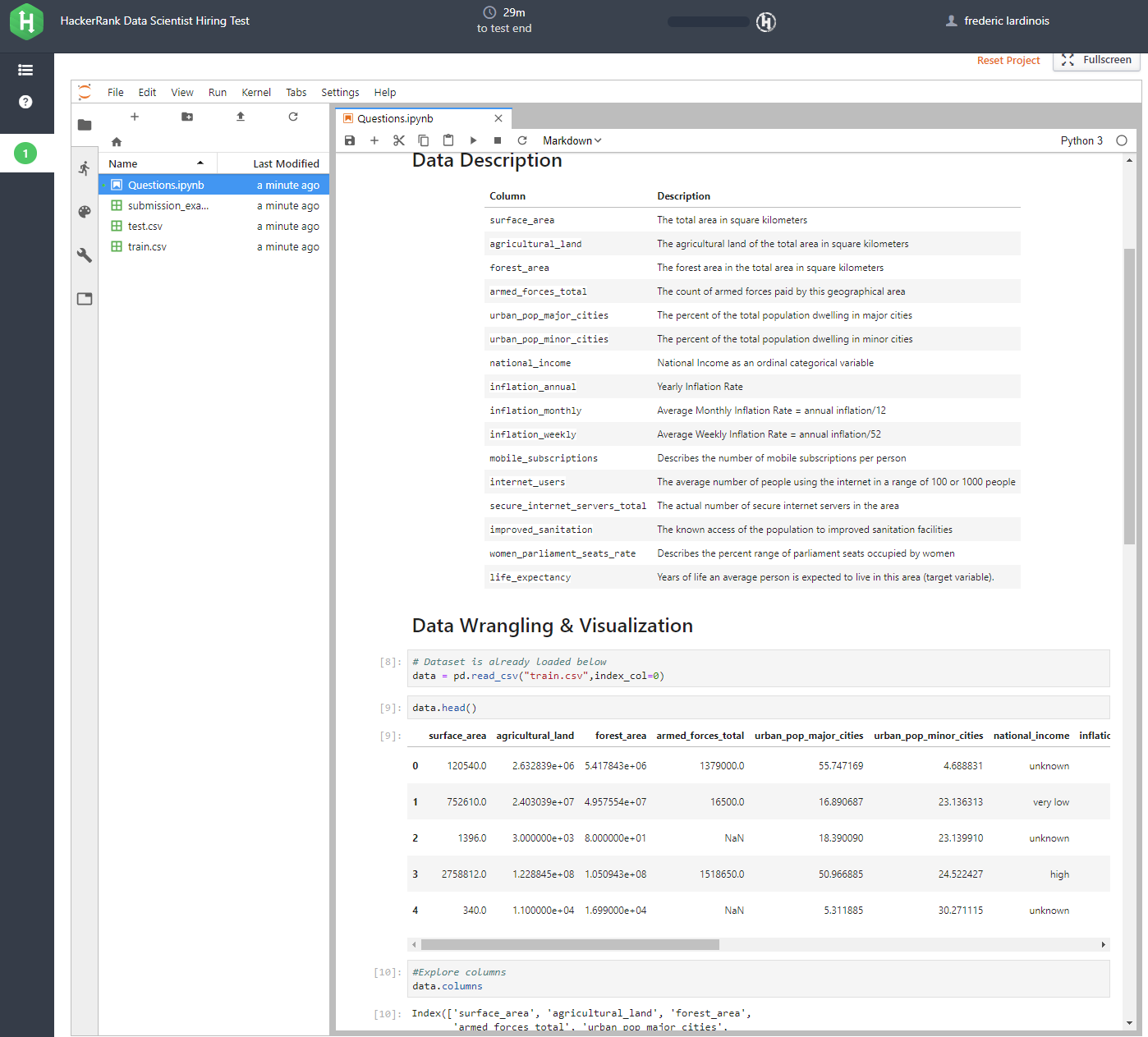Everybody wants to hire data scientists — or at least that’s what it feels like these days. Problem is, data science isn’t just a basic set of skills, but an interdisciplinary skill set that attracts engineers with a wide variety of backgrounds that are often unrelated to computer science. That makes it hard to apply a traditional recruiting process to hiring data scientists (or AI/ML engineers, depending on how you define that role).
HackerRank, which has long offered a hiring platform for engineers, today announced that it wants to solve this problem by adding a data science platform for recruiters and hiring managers who are looking to find the right data scientists for their teams.
HackerRank Projects for Data Science, as the new product is called, helps businesses test how well candidates can handle standard, real-world scenarios like data wrangling and building models based on this data, as well as their skills in visualizing data. Companies can decide which skills they are looking for and then provide all candidates with the same problem set.
“With exponential growth in big data and companies using data to better serve customers across industries — from recommendations on your TV to autonomous driving in vehicles — the demand for skilled data scientists will continue to grow,” said HackerRank CEO and co-founder Vivek Ravisankar. “HackerRank has changed the way enterprises hire software developers—now, we’re bringing the same much-needed functionality to data science. This product will help close the gap between the expectations and needs of employers, allowing them to more easily identify and recruit the data science talent they need to ship innovative products.”
What’s especially smart here is that HackerRank is using industry-standard Jupyter notebooks as the development environment. Since that’s essentially the platform that most data scientists already use, there’s no need for potential employees to learn a new platform and they get to work in a realistic environment that will likely mimic what they’ll use at work, too.
The new platform is now available for all HackerRank customers who are using its recruiting platform. In total, the company currently has about 1,500 customers and close to 6 million developers on its platform that use the service to practice their coding skills (which is what HackerRank started out with) and, potentially, get hired.
If you are a data scientists and want to give it a try, HackerRank set up a trial environment for us that lets you try your hands at a sample project.
from TechCrunch https://ift.tt/2U63C5e
via IFTTT

Comments
Post a Comment